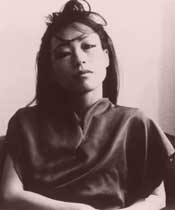Unsuk Chin discusses her new Double Concerto

Unsuk Chin discusses her new Double Concerto, premiered by the Ensemble Intercontemporain in Paris in February
The Double Concerto for piano, percussion and ensemble is your third score written for the Ensemble InterContemporain. How did your vision of the work come about?
Ideas grew out of experiences I had with my recent compositions using piano and percussion: the piano Etudes, the two concertos (for piano and violin), Fantaisie mécanique and Allegro ma non troppo. In the Double Concerto, I’ve tried to bring about the fusion of the two groups of instruments - soloists and ensemble - into a homogeneous whole, so that the result is a single and new body of sound.
You’ve transformed the timbre of the piano.
Yes, the piano is prepared with little metal plugs and hooks which create a sound lightly muted in the middle register and percussive in the bass. The sonority of the treated strings creates a contrast with that of the non-treated strings.
What’s the relationship between the material of the ensemble and the soloists?
The ensemble is made up of 19 musicians and in some ways the players shadow the solo parts. They deliver the impulses that cause the germ-cells of material to develop. But these impulses can also be highly active in inciting each of the 19 instruments to tell its own story. The ensemble is reinforced by its percussionist, who gives an additional colour to the solo parts for very specific effects.
Where does your music sit between East and West?
In this work, like most of my output, I’ve created a world with reference points set in Western and non-Western music in equal measure. In every piece, I try to create certain colours or nuances which don’t exist in European music. Of course, I compose “contemporary music” which has its tradition in the West and my music is always written for standard musical instruments. But, because of my cultural origin, I have a certain aversion to the typical timbre of the European orchestra - for me, it is just an institution from the 19th century - and I have a great deal of affinity with non-European musics. So, I always try to put a completely different colour into my compositions through my experience with the music from outside of Europe.
How would you summarise the Double Concerto?
I’ve tried to write a music of highly coloured bearing and expression, free-flowing and agile, unfolding sometimes in completely unexpected directions.
What are your composing plans going forward?
I’m working on a stagework to be premiered in the 2005/06 season, to be conducted by Kent Nagano. Then there is a London Sinfonietta commission for two sopranos, counter-tenor and ensemble - I’m really looking forward to writing for the Komsi sisters, Anu and Piia. And I’ll be continuing my series of Piano Etudes and thinking about a new Cello Concerto.
> Más información sobre la interpretación: Double Concerto
